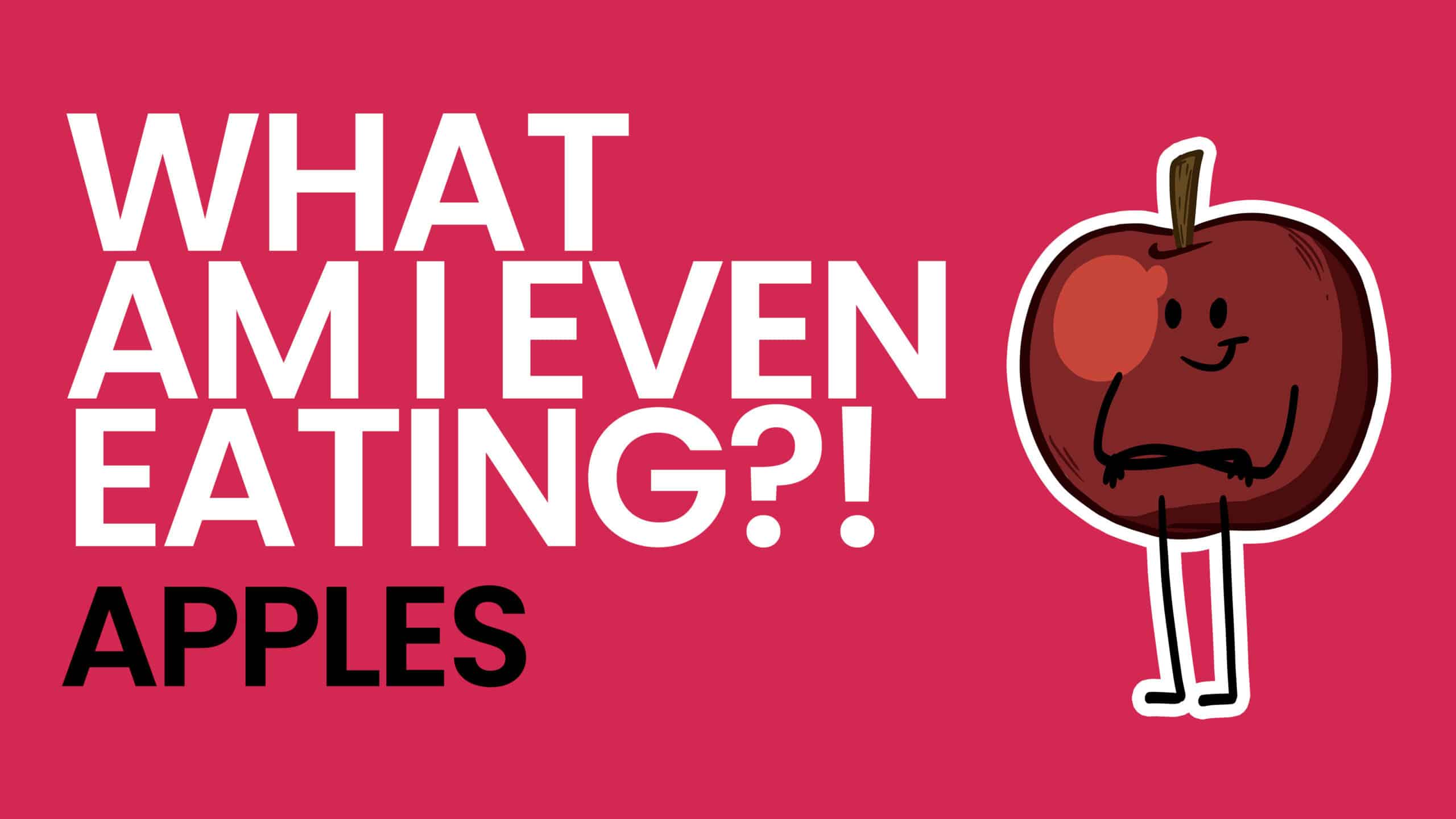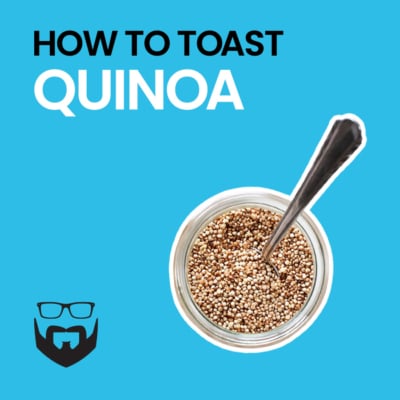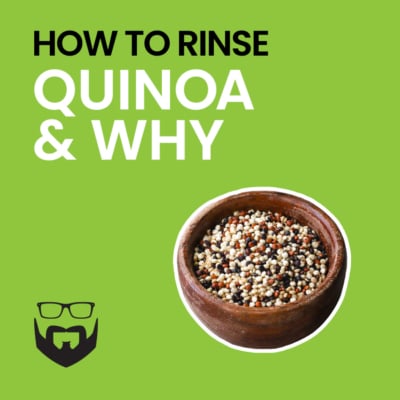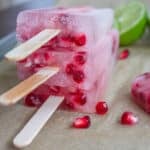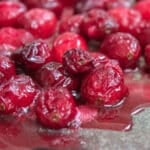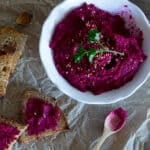Did you know that apples are why colonial Americans were always kinda drunk? And that planting apple seeds won’t produce the same kind of apple? You’ll learn what that’s all about and so much more on the history of apples!
Origin of Apples
Apples were common across the Northern Hemisphere with the first trees originating from an area between the Caspian and Black Sea. Humans began domesticating apples near the Tien Shan mountains in Central Asia somewhere around 10,000 years ago. Our domesticated apple was likely bred from the crabapple, the species Malus sieversii, which grew around the foothills.
Apples that resembled the ones we eat today were spread along the Silk Road trade routes of that region. They were likely traded as fruit, but trees also sprung up from the droppings of animals used as labor. As the Tien Shan apples spread, they were bred with local varieties, forming even newer apples. Just to be clear here. Animals were fed crabapples from one region, pooped em out in another zipcode.
By 1,000 BC, domesticated apples had reached as far as Ireland.
Apples in America
Apples were popular in early modern Britain and came over to America with the Pilgrims. In 1629, William Blackstone was the first person to plant an apple orchard in America, in the Massachusetts Bay Colony, what is modern day Boston.
During the 1800s, John Chapman, also known as Johnny Appleseed, traveled the frontier planting apple trees. He traveled through Pennsylvania, Ohio, Indiana, Illinois, West Virginia, and Ontario. But the apples were not because of pie.
Apples and Prohibition
In the United States, apples have been an important crop going dating back to colonial times. They were eaten fresh but also used for the production of hard apple cider, and an apple liquor called applejack. Cider was produced locally across the pre-industrial country, which resulted in over 10,000 local varieties. This practice continued uninterrupted until Prohibition (1920-1933) when the ban on alcohol production made cider illegal.
This caused many apple orchards to disappear. With those orchards, went many historic cider apple varieties. Once Prohibition ended, American cider production did not recover and only today is hard cider coming back as a popular beverage.
In the modern day, some aficionados are trying to bring back heirloom cider apple varieties by rediscovering old apple trees and cultivating them into orchards.
Hard Apple Cider & Applejack
Naturally fermented and low in alcohol, hard cider was safer than well water, cheaper than beer, and you could make it at home. This made hard cider an everyday beverage for most Americans during the 18th century. And in some regions, like pretty much most of the Northeast, apples were more plentiful than the grains needed for whiskey.
So enter Applejack, a homemade apple liquor. Applejack was produced by “jacking” hard cider – try not to laugh at that. Jacked spirits are distilled not by boiling, but by freezing. With each freeze, the hard cider essentially becomes a slushy. The ice is then skimmed off, therefore increasing the alcohol content of what’s left behind.
Which was usually about 40 proof. Basically America’s first moonshine.
California Apples
Apples first came to California with the Spanish Missions in the 18th century. Apples remained a niche crop until the Gold Rush when orchards began sprouting up to meet the growing population. Now, California is the fifth largest producer of apples in the United States, with Washington, New York, Michigan, and Pennsylvania in the lead. The top 10 producing states also include Virgina, North Carolina, Oregon, Ohio, and Idaho.
California’s top apple producing regions are El Dorado County, with its famous Apple Hill. I’ve been visiting Apple Hill since I was a little kid for its orchards, bake shops, and more. Many apple orchards are located near the coast, like in Santa Cruz, Sonoma, and San Bernardino. Or at higher elevations, like the aforementioned Apple Hill, but also Julien and Oak Glen. But apples are also grown in San Joaquin county, like everything else. California grows over 50% of the nation’s fresh produce.
How Apples got their Name
The modern English word “apple” is derived from the Old English “æppel.” The Old English word came from the Proto-Germanic “aplaz” which originally came from the Proto-Indo-European “hebol.”
The word “apple” didn’t always mean fruit from we know today. Up until the 17th century, it generally meant all fruits including nuts. In Middle English bananas were called “appel of paradis.” The pineapple is also a holdover from this naming convention. Melons, cucumbers, and even pumpkins had names referencing apples.
Like any fruit or vegetable, or anything produced by a plant, was kinda called an apple.
Biological Species
Malus Domestica is the species of apple that is most commonly eaten. Apples are pomes. Pome fruits have a central core filled with seeds.
There are between about 50 species in the genus Malus. Included in that group are the domesticated apple, wild apples, and crabapples. The apple genus grows most comfortably in the temperate zones of the Northern Hemisphere.
Apples belong to the family Rosaceae, which contains other fruits like pears, quinces, apricots, plums, cherries, peaches, raspberries, blackberries, strawberries, rosehips, and even almonds. The family is named after its key species, the rose.
Apple Varieties
At one time, before the Industrial Revolution, there may have been more than 30,000 different varieties of apples. They were so widespread and popular across the Northern Hemisphere that different regional varieties flourished wherever they grew (see the section on planting). Now, it is thought that there are only 7,500 different apple varieties left globally.
After industrialization, uniform seeds and practices were developed that made many of the local varieties obsolete. For one, the shape, size, and layout of orchards changed dramatically. New orchard layouts gave way to new machinery and equipment but also higher yields. And varieties were selected for their commercial fitness. It was during this time that the Red Delicious became popular and pretty much changed the industry. An orchard that once grew hundreds of different varieties was maybe now producing only 10.
Here are the top apple varieties in the U.S. and when they are in season.
| Variety | When They are Ripe |
|---|---|
| Gala | Late July to Early September |
| Empire | Mid August to September |
| Honey Crisp | September |
| McIntosh | September |
| Red Delicious | Mid to Late September |
| Golden Delicious | Mid to Late September |
| Rome | Early to Mid October |
| Granny Smith | Mid to Late October |
| Fuji | Mid to Late October |
| Pink Lady | Mid to Late October |
| Cripps | Late October to Early November |
Apple Nutrition
Apples are a good source of fiber and Vitamin C. They also contain beneficial antioxidants like quercetin, catechin, chlorogenic acid, and anthocyanin.
Eating Apples
As versatile fruits, apples go into a variety of food applications. Approximately 40% are eaten fresh. A further 39% are turned into dried apples, baby food, and other processed goods such as apple sauce. The remaining 21% are pressed for apple juice and apple cider.
In the US, apples feature heavily in baked goods. Apple pie is the main example but crumbles and strudels made with apple are also popular.
Global Production
The United States grows 240 million bushels of apples across 322 thousand acres of land. China is by far the largest apple cultivator globally.
- China – 46 million tons
- Turkey – 4.5 million tons
- USA – 4.5 million tons
- Poland – 4 million tons
- India – 2.3 million tons
- Iran – 2.2 million tons
- Russia – 2.2 million tons
- Italy – 2.2 million tons
- France – 1.6 million tons
- Chile – 1.6 million tons
Farming Apples
California is an ideal place to grow apples. And it takes skilled labor as apples are not grown from seeds, but also need to be handpicked.
Water & Soil
Apples in California require 3.7 acre-feet of water per year. This is slightly less than citrus and slightly more than crops like onions and garlic. In California, pastureland requires the most water at 4.92 acre-feet per year.
Planting
If you plant the seeds from an apple, the tree and any resulting apples, will be completely different than the parent apple. That’s because apples are extremely heterozygous, which sounds like something they would ban in Florida. It’s because apples are like people. It means the result – whether an apple or a human – contains all the genetic possibilities of both its parents.
Apples trees have to be cross polinated in order to produce fruit. Meaning the tree needs pollen from a completely different variety of tree to bare fruit.
Commercial apple trees are produced by grafting a scion onto a rootstock. The scion is the upper part of the tree which is chosen based on the fruit (in this case, variety of apple) you want the tree to produce. The rootstock is the lower trunk and roots, which determines characteristics such as pest resistance, hardiness, and importantly the size of the mature apple tree.
Trees are typically planted in the spring, when just around a year old. In their second year they leaf out. By year 4, the trunk will be sturdy and the branches will be developed. Blooms will begin and some fruit will appear. By year 5 the tree will be mature but the largest fruit yields may only come after year 6. An apple tree can produce fruit for up to 50 years, though productivity trails off after a few decades.
Maintenance
Pruning is important to keep apple trees within a size suitable for easy harvest. It should be done in the dormant winter season. It also keeps the tree healthy, ensures energy is put towards fruit production, and helps distribute sunlight better. Fruit thinning is also a common process in apple orchards. This practice removes some of the fruit that looks damaged or is excessive early in its development, allowing the tree to put its energy towards more viable fruit.
Growing Season
Apple trees are a permanent crop and are dormant during the winter. They need plenty of time in dormancy for proper fruit growth later in the year. They are also pruned during this time for efficiency. In March, buds begin to emerge from the tips of branches and tiny tiny leaves begin to grow. Come April, blossoms unfurl from the buds and begin to bloom. Bees and other pollinators then get to work. By May the bloom is finished and small green fruit begins to show at the base of the flowers, one fruit per flower. Fruit grows over the summer. By July they look less like a pomegranate and more like an apple. Once apples start to ripen, they will begin to take on their final color. They go from green to light green, then to red or yellow. This change in color and of course flavor is how farmers know they are ready.
Harvest
In California, July is the earliest that the harvest begins for early-ripening apples. Harvests continue into early November. This wide range is due to the many varieties and different climates within California. Gala apples are some of the first to ripen.
Apples are predominantly harvested by hand using skilled farm labor. Mechanical harvesters and harvesting aids do exist but they aren’t used uniformly. Apples need to be picked carefully to avoid bruising.
Processing
Many apples go through a processing facility before going to the grocery store. They are washed and then run through a scanner to check for good color, blemishes, and deformities. Bad apples are removed.
Apples can either be packaged right away or stored in cold storage or low-oxygen storage for several months until they are needed. Stickers are added mechanically and the fruit is sorted into boxes to be sent to grocery stores. It’s important to keep apples cold during this process to avoid the flesh from turning mealy.
And that’s how apples got from Central Asia, to California, to you!
Sources: Apple – Wikipedia, OED Apple, Malus Wikipedia, Rosaceae – Wikipedia, ThoughtCo History of the Apple, California Foundation for Agriculture – Apples, Apples, Ag Reasearch Center, USDA Nutrition Apples, PSLA History of Apples, Wikipedia apple produciton figures, Stark Bros Orchard & Nurseries, Orchard Notes, California Backyard Orchard, The Kitchn Apple Harvest, Montana State Apple Page, Press Democrat Water Article, Apple Ripening Chart, Taste Atlas Apple Chart, Taste Atlas California Apple Varieties, How the US Govt Almost Killed the Apple, Manteca Apple Bulletin
